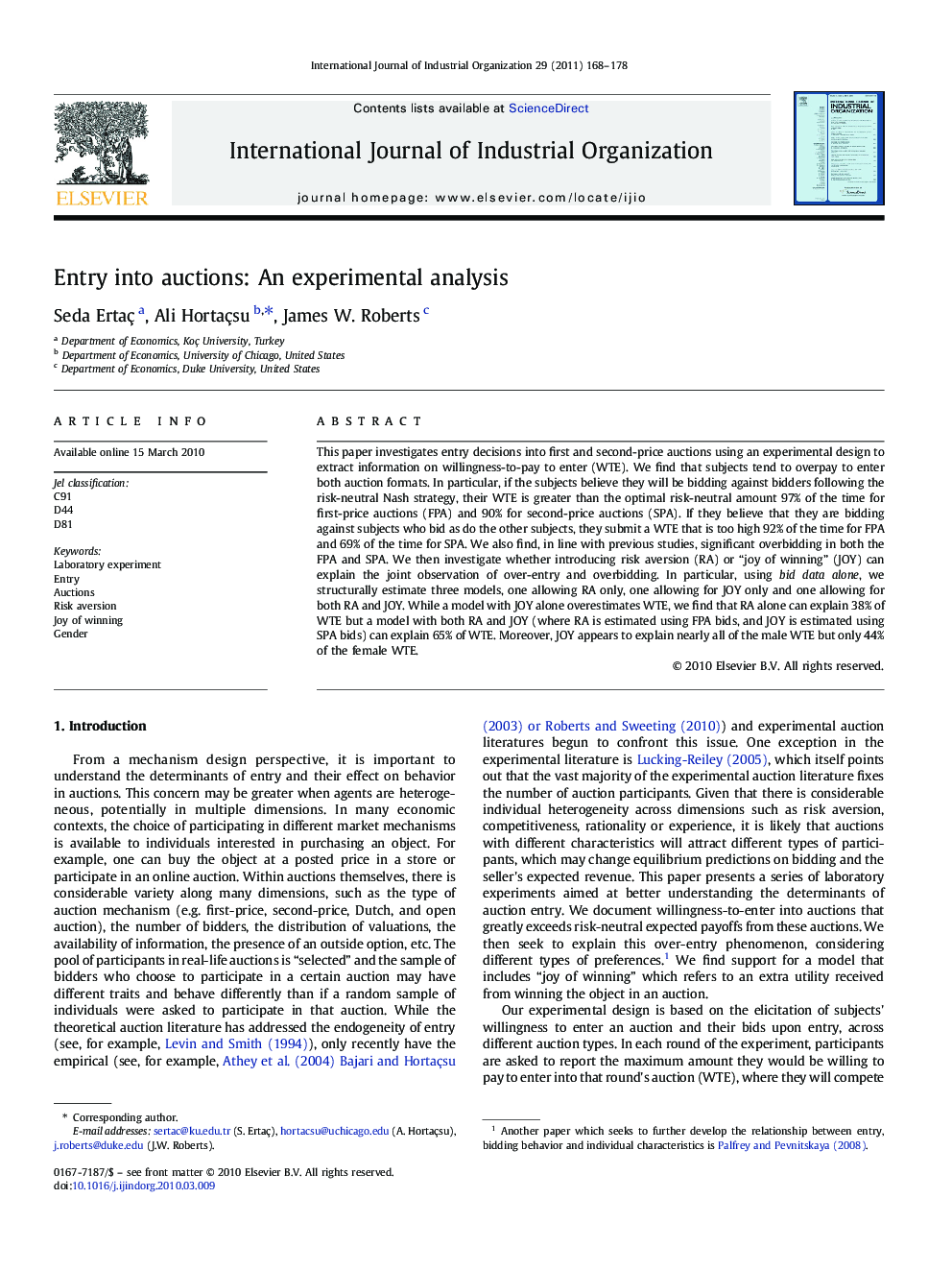| Article ID | Journal | Published Year | Pages | File Type |
|---|---|---|---|---|
| 5078193 | International Journal of Industrial Organization | 2011 | 11 Pages |
Abstract
This paper investigates entry decisions into first and second-price auctions using an experimental design to extract information on willingness-to-pay to enter (WTE). We find that subjects tend to overpay to enter both auction formats. In particular, if the subjects believe they will be bidding against bidders following the risk-neutral Nash strategy, their WTE is greater than the optimal risk-neutral amount 97% of the time for first-price auctions (FPA) and 90% for second-price auctions (SPA). If they believe that they are bidding against subjects who bid as do the other subjects, they submit a WTE that is too high 92% of the time for FPA and 69% of the time for SPA. We also find, in line with previous studies, significant overbidding in both the FPA and SPA. We then investigate whether introducing risk aversion (RA) or “joy of winning” (JOY) can explain the joint observation of over-entry and overbidding. In particular, using bid data alone, we structurally estimate three models, one allowing RA only, one allowing for JOY only and one allowing for both RA and JOY. While a model with JOY alone overestimates WTE, we find that RA alone can explain 38% of WTE but a model with both RA and JOY (where RA is estimated using FPA bids, and JOY is estimated using SPA bids) can explain 65% of WTE. Moreover, JOY appears to explain nearly all of the male WTE but only 44% of the female WTE.
Related Topics
Social Sciences and Humanities
Economics, Econometrics and Finance
Economics and Econometrics
Authors
Seda Ertaç, Ali Hortaçsu, James W. Roberts,
